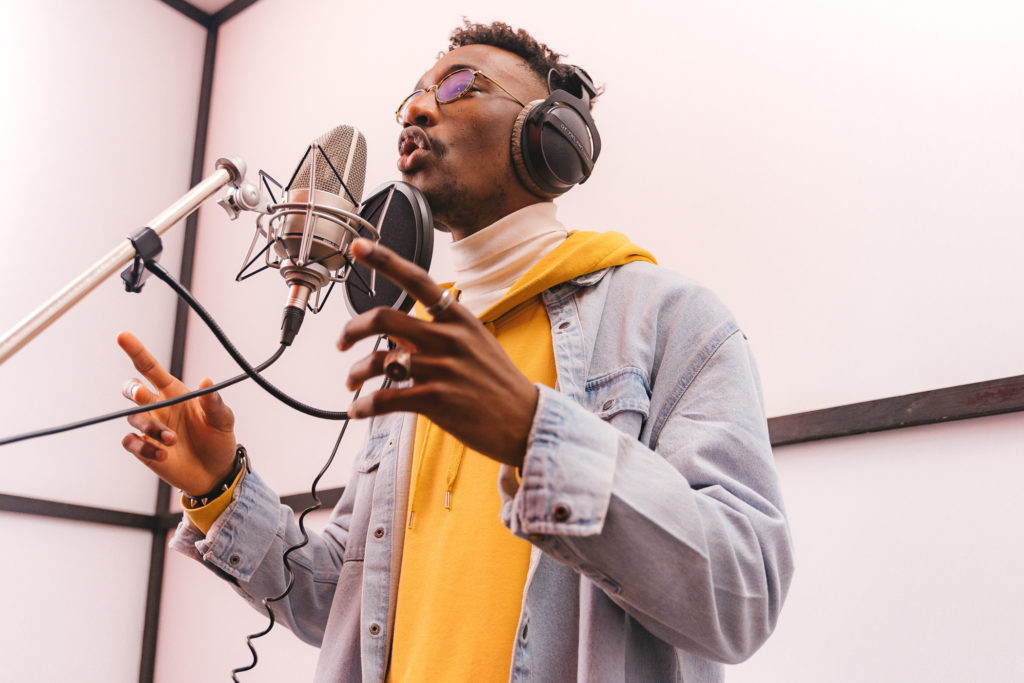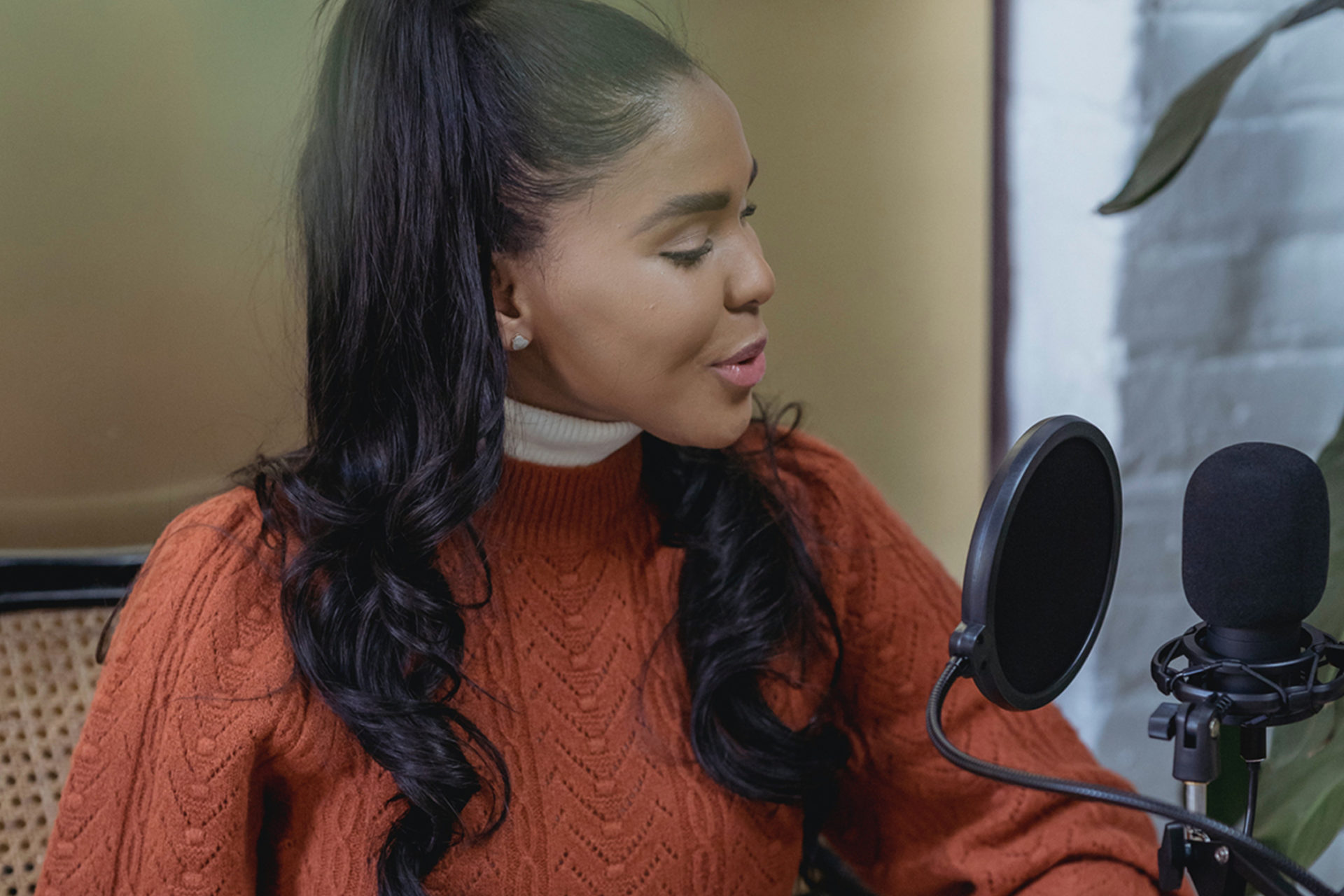+ Learn from Grammy-winning pop artist Kimbra how to harness the full creative potential of your voice in song. Check out her course.
Vocal recording can be quite comfortable at home, but you might also feel that you’re missing the energy and hype of recording a commercial recording studio. For most performers and producers alike, it’s simply not intuitive or easy to recreate the vibe of radio-friendly pop hits in a domestic space.
But that doesn’t mean it’s not possible! There are some strategies we can implement at home in order to make your vocal recording sessions more lively, dramatic, and organic — whether it’s you performing or producing.
It all starts with preparation.
Here are eight tips for preparing your recording sessions to really help you create energy and excitement in your vocals.
1. Set the Vibe: Record at Night, Room Lights, Candles, etc.
In order to get started with the recording process, try to set the mood and the vibes just right. Besides the technical aspects of recording, it is also important to feel fun, alive, and inspired; and a good atmosphere in your room is key to creating that. Recording at night, in a dimmer setting, and having some LED lights can be one option.
If you can keep things safe (no need to provoke any fire hazards!), you can also use some candles so that you and your performer can get in the mood. You can also record during the day, but the vibe at night can be really special in order to channel that special energy from your vocals that makes it feel like a live concert.
2. Practice and Learn the Song Entirely (Beforehand)
Speaking of which, you should treat a recording session like a concert and rehearse as much as possible. You want to come into the session having the song down pat, all the phrasing tight, and your high pitches already figured out — as well as all the lyrics memorized and basically the musical section ready to go.
The actual recording should really be about articulation and fine-tuning your vocal performance rather than figuring out the basics (otherwise it’s kind of a waste of time). In other words, having practiced beforehand will allow you to focus on getting the best performance possible.
+ Read more on Flypaper: “Our Favorite Audio Interfaces for Home Recording in 2022.”
3. Come Prepared With Vocal Ideas and Experiments to Try Out
Whether something works in this or that song, or it simply exists as an unchained idea to try out to see how it affects your voice as you’re doing it, coming prepared with fun and interesting vocal ideas or “characters” could make for some unexpectedly creative energy.
This is a trick that Grammy Award winning pop songwriter and singer, Kimbra uses all the time when she encounters the studio space and it helps her enter into a headspace filled with excitement and wonder. Hear her talk about this exact strategy in the below video, courtesy of her course on Soundfly, Kimbra: Vocal Creativity, Arranging, and Production.
4. Set Up Your Equipment Carefully to Avoid Problems During the Session
Before your record, make sure that your equipment and DAW session is ready to go. Also make sure your microphone is placed properly within the room. If the equipment is not set up properly, you might have to solve issues during the session which can be distracting. The longer the troubleshooting takes, the more your performance is likely to suffer, as your focus and energy will be spent on something other than your performance.
5. Set Your Levels Appropriately
An important part of executing an optimal vocal recording session is to get your gain staging done right. This means that you should have tested the volume levels of the quietest and the loudest parts that you’re singing before the recording session starts.
If you have your gain staging right, then you don’t have to worry about singing loud and having clipping, or singing really quiet and not having a gain level that’s strong enough. Having your gain staging done properly will put your mind at ease about level concerns, and it will allow you to focus on creating energy around your vocals.
6. Record Parts in Sections, Then Create Comp Takes
In order to create energy, you can try recording songs in smaller sections. The idea here is that you can focus on smaller sections easier, and you can concentrate on recording energetic parts for a specific section of the song. For instance, you could record the song verse by verse or chorus by chorus, giving your best for each take.
Focus your energy into recording the most energized and highest level of takes possible. Then, you can pick the best takes and comp them to create a great final performance in editing.
This is a really effective strategy as opposed to doing whole takes from beginning until the end. If you just record whole takes, you might not be able to focus on weaker parts of the songs, and also after 30 minutes or so you can get quite tired.
However it will be far easier just to record part-by-part and that way you can focus your energy and get each of the sections perfectly.
7. Just Do a Few “Full Takes” in the End
Recording smaller sections does not mean that you can’t record full takes at all! If you have time and energy, it is usually preferred to record some full takes at the end of a session. This is because by this time you reach the end of a session, you are probably already comfortable with the song and you have a pretty good grasp of what’s happening in every section.
Perhaps you might be super energized and you might want to do a few full takes in order to stitch everything together. You can actually get some good takes that might be worth using, so that is a strategy that is worth trying.
8. Record Background Vocals on the Fly
Once you’re done recording your lead vocals, you should also try recording some background vocals to add more energy. Background vocals are there to not only make your lead vocal stronger, but also to create some variety in your vocal arrangement. Background vocals can also make the lead vocals stand out and it can add to the mood and energy of the song significantly.
Consequently, you should always record a background vocal part because it can lead to some pretty nice ideas, even if you don’t end up using them!
+ Read more on Flypaper: “How to Make a DIY Vocal Booth in Your Home.”
Final Thoughts
The most important thing is that you should keep trying different ideas and figure out what’s best for you, because what might work for a vocalist might not necessarily work for the other. So, I highly suggest you to record as much as possible at home and to develop a workflow both as a performer and as a producer.
In the end, you will notice that having a proper workflow will create the most efficient results and furthermore you will be able to get more energized performances. Go get started with recording yourself and most importantly have fun making great music!
Don’t stop here!
Continue learning with hundreds of lessons on songwriting, mixing, recording and production, composing, beat making, and more on Soundfly, with artist-led courses by Ryan Lott, Com Truise, Jlin, Kiefer, RJD2, and Kimbra: Vocal Creativity, Arranging, & Production.






